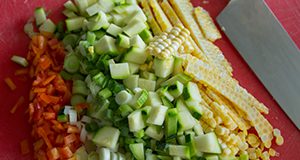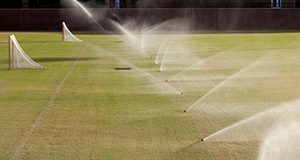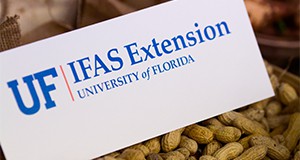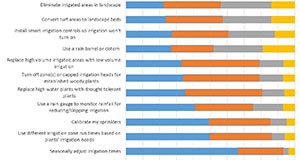Increasingly, gardeners receive attention for the educational, environmental, health, and social impacts that their projects facilitate within schools and communities. Garden associations allow Extension to play a vital role in providing technical information to support new and existing gardens. This three-page fact sheet outlines the framework used by a pilot garden association program in Polk County, Florida. Written by John M. Diaz, Susan Tyler Webb, and Erin Elsberry and published by the Department of Agriculture Education and Communication.
http://edis.ifas.ufl.edu/wc279
Tag: County Extension
Consultation Forms for Walk-In Clientele and Landscape Site Visits
This eight-page fact sheet contains forms for horticulture Extension agents and staff to use during walk-in consultations and/or on-site consultations related to plant identification, problem diagnosis, and cultural advice. The forms are available as fillable PDFs. Written by Amanda D. Ali, Laura A. Warner, Sydney Park Brown, Susan Haddock, and Laurie Albrecht and published by the Department of Agricultural Education and Communication.
http://edis.ifas.ufl.edu/wc277
Guidelines for Operation and Usage of County Kitchens in the State of Florida
 In recent years, many people have become interested in developing small food businesses. Using county kitchens to make food products for sale may seem very attractive. However, because of different local, state, and federal regulation requirements, there may be some confusion and unresolved conflicts among different parties as to the legalities and practicalities involved. This 3-page fact sheet provides guidelines and advice for Florida Extension personnel to use when determining the appropriate usage for their kitchen facilities, based on a situation in one Florida county. The publication covers utilization, roles and responsibilities, and potential liability issues relevant to the use of county kitchens, providing some potential solutions to conflicts for all parties. Written by Amarat Simonne, Tim Wilson, Geralyn Sachs, Joanne Cooper, Brenda Morris, Steven von Bodungen, and Liz Felter, and published by the UF Department of Family, Youth and Community Sciences, August 2016.
In recent years, many people have become interested in developing small food businesses. Using county kitchens to make food products for sale may seem very attractive. However, because of different local, state, and federal regulation requirements, there may be some confusion and unresolved conflicts among different parties as to the legalities and practicalities involved. This 3-page fact sheet provides guidelines and advice for Florida Extension personnel to use when determining the appropriate usage for their kitchen facilities, based on a situation in one Florida county. The publication covers utilization, roles and responsibilities, and potential liability issues relevant to the use of county kitchens, providing some potential solutions to conflicts for all parties. Written by Amarat Simonne, Tim Wilson, Geralyn Sachs, Joanne Cooper, Brenda Morris, Steven von Bodungen, and Liz Felter, and published by the UF Department of Family, Youth and Community Sciences, August 2016.
http://edis.ifas.ufl.edu/fy1469
How the General Public and Local Officials Prefer to Learn about Agricultural Water Use in Florida

Water is a precious resource that is invaluable to the state of Florida. The amount of water being used daily in the state is estimated at 14.3 million gallons. Part of a series dedicated to describing the preferred ways of learning about agricultural water use in Florida, this study can be used to assist Extension educators and the agricultural industry at large in the development of strategies meant to inform people about the realities of water use. This three-page fact sheet helps Extension educators understand preferred learning mediums so they can provide useful information about agricultural water use. Written by Courtney T. Owens, Alexa J. Lamm, and Ricky W. Telg and published by the Agricultural Education and Communication Department.
http://edis.ifas.ufl.edu/wc247
Priority Competencies Needed by UF/IFAS Extension County Faculty

Research shows that competency is a better indicator of employee potential than intelligence alone. This 5-page fact sheet outlines ten competency areas relevant to Extension county faculty, as well as examples of how Extension faculty might embody these qualities in their work. Written by Amy Harder, and published by the UF Department of Agricultural Education and Communication, September 2015.
http://edis.ifas.ufl.edu/wc236
Encouraging Landscape Water-Conservation Behaviors #1: Tailoring Programs To Florida Residents Who Use Irrigation in the Home Landscape
To better promote water-conservation practices among homeowners who irrigate their landscaping, Extension professionals must first have a clear understanding of this target audience’s habits, beliefs, and needs. This 10-page fact sheet recommends that Extension professionals analyze their audiences through several factors, including their interest in water conservation and knowledge of water issues and laws. Written by Laura A. Warner, Emmett Martin, Alexa Lamm, Joy Rumble, and Randall Cantrell, and published by the UF Department of Agricultural Education and Communication, May 2015. http://edis.ifas.ufl.edu/wc199
Finding Grant Opportunities to Support County Extension Programs (WC134)
 This 3-page fact sheet presents information about where to look for grant opportunities, what to look for when reviewing grant opportunities, and how to determine if the opportunity fits your idea. Written by Amy Harder, Alexa Lamm, and Sebastian Galindo, and published by the UF Department of Agricultural Education and Communication, December 2012.
This 3-page fact sheet presents information about where to look for grant opportunities, what to look for when reviewing grant opportunities, and how to determine if the opportunity fits your idea. Written by Amy Harder, Alexa Lamm, and Sebastian Galindo, and published by the UF Department of Agricultural Education and Communication, December 2012.
http://edis.ifas.ufl.edu/wc134
Assessing Economic Impacts and Benefits of Commercial Horticulture Extension Programs (FE898)
 As fiscal pressures increase from federal and state government agencies to spend public dollars more effectively, it is imperative that the outcomes from educational efforts be clearly documented in terms of measurable changes in knowledge and behavior of clientele or stakeholders. This 5-page fact sheet presents a standardized approach for evaluating the economic impacts of extension educational programs in commercial horticulture in Florida, with which impacts are quantified in terms of measurable changes in revenues, income, or jobs. Written by Alan Hodges, Shawn Steed, Jane Morse, Peggy Dessaint, Donald Rainey, and Charles Vavrina, and published by the UF Department of Food and Resource Economics, September 2011. (AP Photo:Thomas Wright, University of Florida/IFAS)
As fiscal pressures increase from federal and state government agencies to spend public dollars more effectively, it is imperative that the outcomes from educational efforts be clearly documented in terms of measurable changes in knowledge and behavior of clientele or stakeholders. This 5-page fact sheet presents a standardized approach for evaluating the economic impacts of extension educational programs in commercial horticulture in Florida, with which impacts are quantified in terms of measurable changes in revenues, income, or jobs. Written by Alan Hodges, Shawn Steed, Jane Morse, Peggy Dessaint, Donald Rainey, and Charles Vavrina, and published by the UF Department of Food and Resource Economics, September 2011. (AP Photo:Thomas Wright, University of Florida/IFAS)
http://edis.ifas.ufl.edu/fe898


